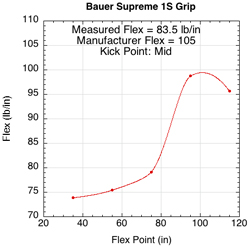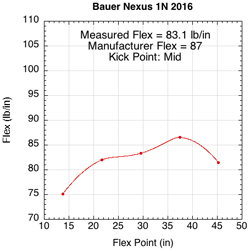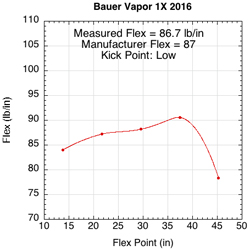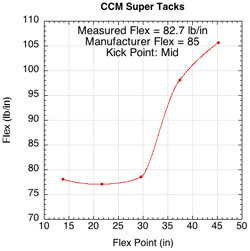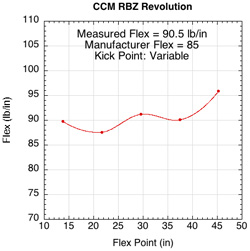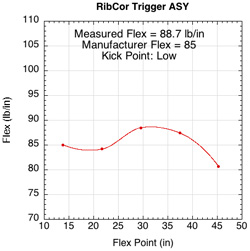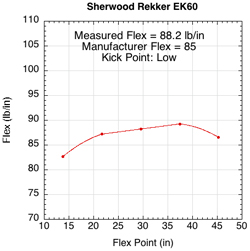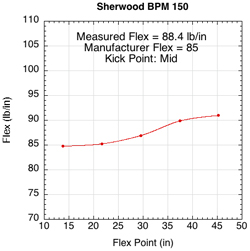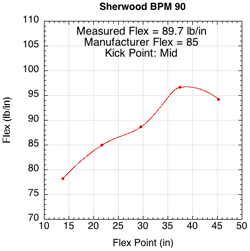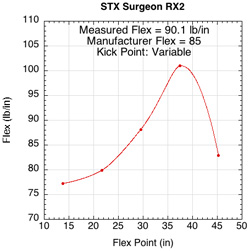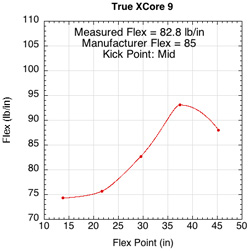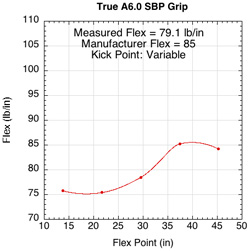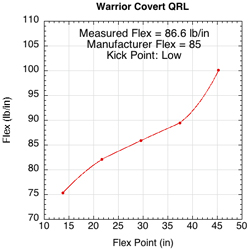Note: See "Flex of a Hockey Stick" for an expanded discussion of the science of hockey stick flex.
Introduction
Some sticks are more flexible at the blade end, some are more flexible at the handle end, and some are more flexible in the middle. The flex rating of a stick is just the average flex over a 1.0 m long section in the middle. In order to measure the variation in flexibility along the shaft, the authors took a sample of 13 high performance sticks and bent them over five different 0.6 m long sections from one end to the other. Each section started 0.2 m from the next and overlapped the next section, as indicated in Fig. 1. A vertical force, F, was applied in the middle of each section, as indicated by the arrow, and the vertical deflection, y was measured in order to calculate the stiffness k = F/y of each section. The deflection, y, was only about 5 mm in this test since a deflection of one inch over each 0.6 m length could easily have broken the stick.

Figure 1 — The five sections of the stick used to measure the flex. The 60 cm flex zones started at 5 cm from the end of the stick and progressed down the stick in 20 cm intervals.
In theory, the flex over a 0.6 m long section of the shaft is 4.63 times larger than the flex over a 1.0 m long section, since the shaft stiffness is inversely proportional to the cube of the bending length. In order to compare the flex over each 0.6 m long section of the shaft with the flex over the 1.0 m long section, we divided the measured stiffness of the shorter sections by 4.63 to provide a meaningful comparison. That way, the flex of each short section could be compared directly with the average flex of the 1.0 m long middle section. The results are displayed below in the Flex Profile Gallery.
Flex Profile Gallery
